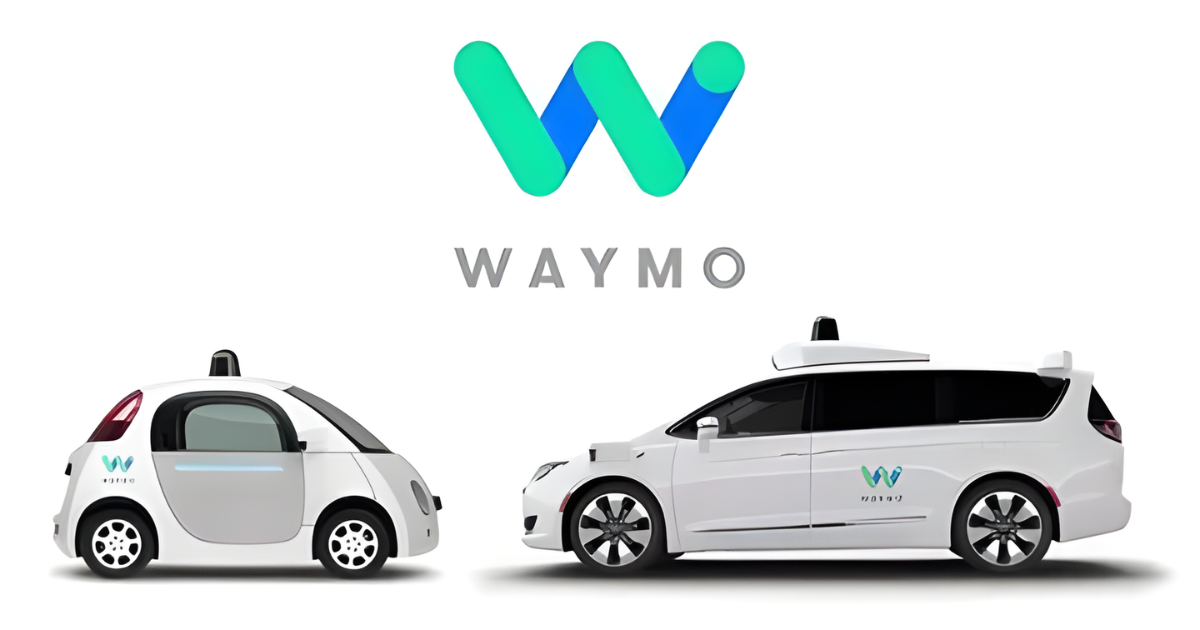Introduction to Waymo
Waymo, a subsidiary of Alphabet Inc., is developing self-driving vehicles and related technologies. The company was founded in 2009 as the Google Self-Driving Car Project, developing self-driving car technology for over a decade before being spun into its own company, Waymo, in 2016. Waymo has emerged as an industry leader in autonomous vehicle development and is working to deploy fully driverless transportation services.
Read More: Digital News Planet.
History and Background
The origins of Waymo can be traced back to early self-driving car research at Google. In the mid-2000s, engineers at Google began working on autonomous vehicle technology as a side project. By 2009, the efforts were formalized into the Google Self-Driving Car Project to develop fully autonomous vehicles.
The early Waymo team was led by Sebastian Thrun, a Stanford computer science professor who had taught Stanford’s autonomous vehicle program. Other vital early members included Chris Urmson, Mike Montemerlo and Anthony Levandowski. The project was initially kept secret under Google X, the company’s experimental projects lab.
In 2014, Google unveiled its first fully functioning prototype vehicle, showing off its self-driving capabilities. This prototype had basic self-driving features but still required human monitoring and intervention. Over the next few years, Waymo continued refining its hardware and software, racking up millions of miles of testing on public roads.
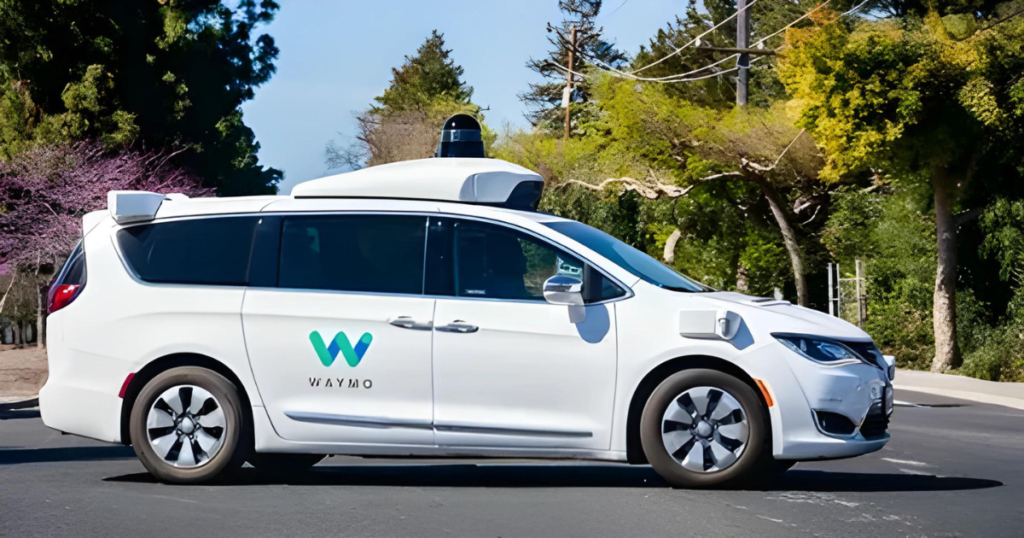
By 2016, the project was ready to be spun into its own company under the Alphabet parent company. In December 2016, Waymo was officially formed as a standalone subsidiary led by John Krafcik, former president of Hyundai North America. This marked the transition from an experimental project to a full-fledged commercial enterprise.
Since then, Waymo has continued to lead in autonomous vehicle development. It remains focused on research and development with self-driving cars and trucks, enabling ride services, delivery logistics and more. The company is actively forming partnerships to commercialize and scale its technology.
Waymo’s Self-Driving Technology
The critical innovation from Waymo has been the development of its autonomous driving technology, with both hardware and software components.
On the hardware side, Waymo vehicles are equipped with sensors like lidar, radar and cameras to visualize their surroundings in 3D. This allows the vehicles to effectively “see” 360 degrees around them. The sensor suite has been engineered for robustness and high performance in diverse environments.
The software is what makes sense of all the sensor data. Using sophisticated machine learning algorithms, Waymo’s system can identify objects, understand behaviour, and plan safe navigation paths. The software continues improving via billions of miles of simulated and real-world testing.
The hardware and software give Waymo vehicles a detailed understanding of their environment. The cars can identify pedestrians, cyclists, construction zones and more. By predicting behaviour, the cars know when to change lanes, turn or brake. The system provides redundancy by fusing information from multiple sensor modalities.
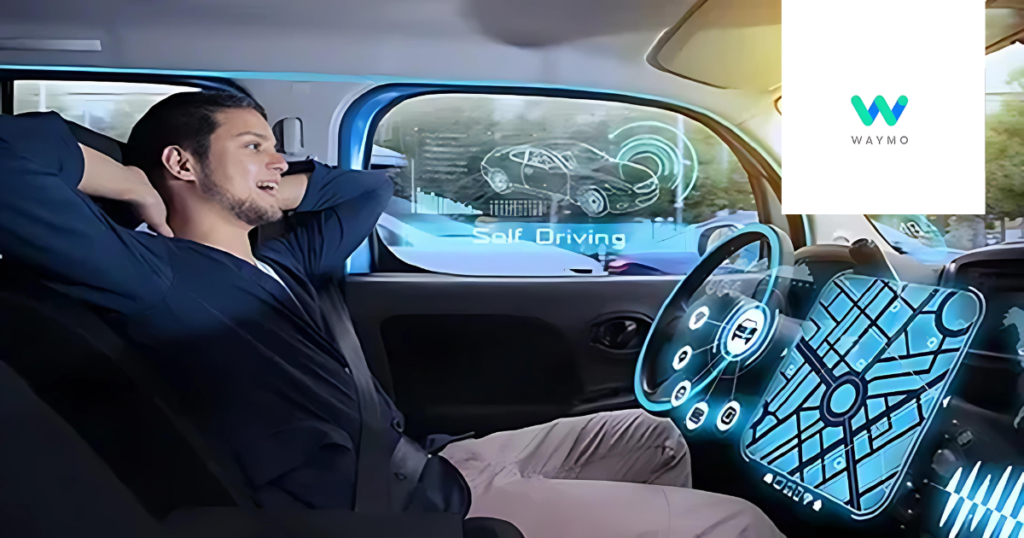
This self-driving system can handle complex scenarios like busy city intersections or residential neighbourhoods. However, a human still monitors remotely as a precaution during current testing phases. The next step for Waymo is to remove human oversight and enable truly driverless operation.
Waymo Driver: The Company’s Autonomous Driving System
Waymo Driver is the official name for the company’s integrated self-driving system. It encompasses all the hardware and software that enables full automation.
Waymo Driver has a dome lidar and multiple vision sensors mounted on the vehicle exterior. This provides 360-degree visibility around the car. Long-range lidars are also positioned for enhanced vision and object detection.
Inside the vehicle are computer systems that run the AI software and process sensor data. There is also connectivity to Waymo’s data centres via 5G, which enables access to high-definition maps and data for navigation.
With constant inputs from sensors and connectivity, Waymo Driver understands the vehicle’s location precisely. The software identifies routes, objects, people and more against its vast database. It predicts behaviour and plans paths free of collisions.
The latest iteration, 5th generation Waymo Driver, has over a decade of development behind it. It has accumulated over 20 million real-world miles and 10 billion simulation miles. This experience allows it to handle complex scenarios.
According to Waymo, its vehicles can now drive autonomously without human oversight. However, trained specialists still remotely monitor rides for additional confidence and safety. Waymo aims to remove human monitoring as testing progresses and launch fully driverless commercial services.
Waymo One: The Company’s Autonomous Ride-Hailing Service
In 2018, Waymo launched its first commercial self-driving service called Waymo One. This provides an autonomous ride-hailing offering similar to Uber or Lyft but without human drivers.
Waymo One was first launched as an early rider program in Phoenix, Arizona. A select few hundred users could hail rides within a defined geographic area. Since then, the program has expanded with broader access and areas of coverage.
Users open the Waymo One app on their smartphone to summon a ride. The app is similar to other rideshare platforms. Once matched with a vehicle, users are picked up for travel to their destination.
Inside the vehicle, screens provide information about the route, vehicle status and more. Rides now have attendants in the car to handle questions and monitor operations. The goal is to remove attendants eventually and have fully driverless rides.
As of 2022, Waymo One provides thousands of rides per week. While still limited, it represents the first commercially viable self-driving ride service. Waymo continues to scale operations, with plans to expand to new geographies like San Francisco.
The launch of Waymo One marks a significant milestone in deploying autonomous vehicle technology. It culminates over a decade of research and development at Waymo. While still early, Waymo One sets the stage for scaled driverless transportation services.
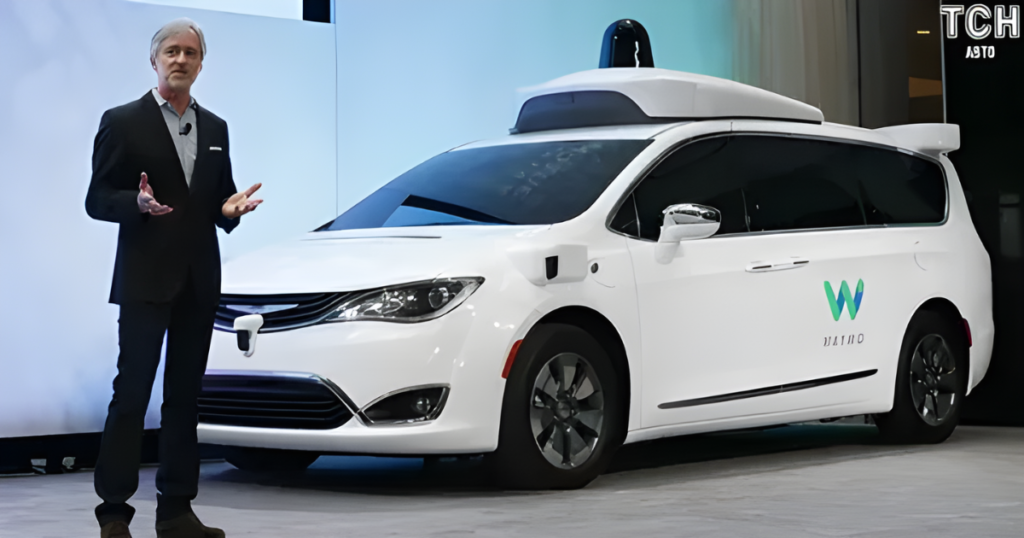
Partnerships and Licensing
In addition to its services, Waymo is advancing its technology through partnerships and licensing to other companies.
On the ride-hailing front, Waymo has partnerships with Lyft, AutoNation and Geico to integrate its driverless tech. This allows Waymo to scale its autonomous ride pool beyond its own Waymo One service.
Waymo is collaborating with Daimler Trucks to develop autonomous semi-trucks for commercial vehicles. Its self-driving tech can enable long-haul trucking automation.
Waymo is also licensing its self-driving system to transportation providers. In 2021, it signed an exclusive licensing deal with Volvo to integrate the Waymo Driver into Volvo’s new all-electric vehicle line. This will enable Volvo to sell vehicles equipped with Waymo’s system.
Additional deals with Fiat Chrysler Automobiles and Renault-Nissan-Mitsubishi further expand its reach. These partnerships help accelerate the adoption and commercialization of Waymo technology across auto manufacturers.
By licensing its driverless system and forming strategic partnerships, Waymo aims to bring autonomous mobility to more people and industries beyond its services. It solidifies Waymo’s position as a provider of foundational self-driving technology.
Waymo Via: Self-Driving Trucks for Logistics
Waymo Via is the company’s trucking and local delivery service focused on autonomous logistics. It leverages Waymo’s self-driving know-how for commercial vehicles.
The goal of Waymo Via is to enable cost-effective transportation of cargo. It aims to improve the efficiency, safety and sustainability of logistics operations. Driverless trucks operated around the clock can provide these benefits.
Some specific applications include:
- Long-haul trucking between logistics hubs
- Port drayage for container transport
- Urban delivery services for last-mile routes
Waymo Via is currently testing its fleet of autonomous Class 8 trucks in multiple US states. The trucks are equipped with Waymo’s latest sensor suite and self-driving software specialized for navigating freight routes.
The service has piloted cargo runs in Texas, Arizona, California, Ohio and other states. Tests involve no occupants in the driver seat to simulate fully uncrewed operation. Waymo trucks are supervised remotely by specialists who can intervene if needed.
As testing progresses, Waymo aims to launch commercial services with business customers. Significant shippers like UPS have already signed up for future delivery services. Autonomous trucking offers lower transport costs and flexibility for suppliers and retailers.
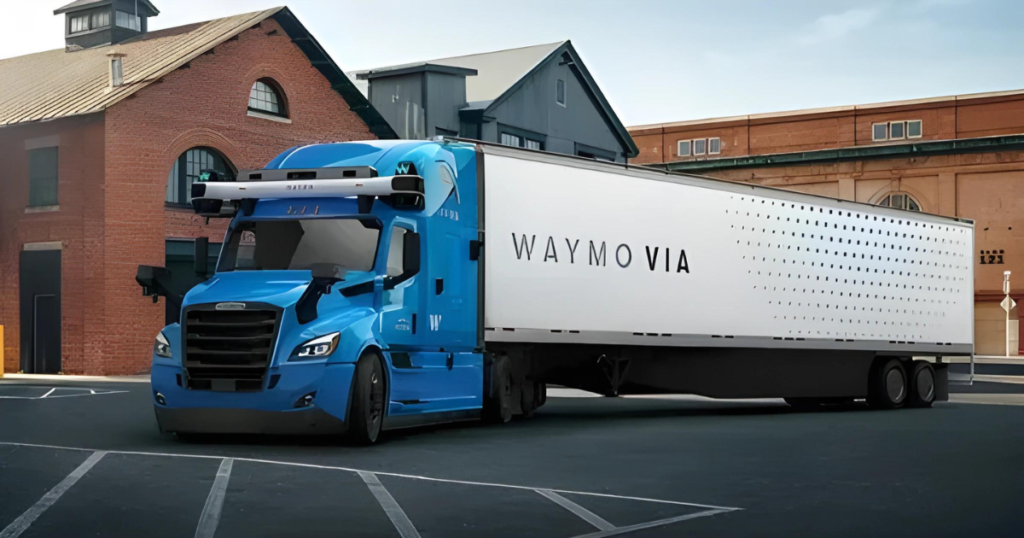
While still emerging, Waymo Via’s self-driving trucks could remake supply chain logistics in the coming years through greater efficiency and automation. It’s a natural extension of Waymo’s expertise in commercial vehicles.
Waymo Driver for Freight: Autonomous Trucking Tech
Waymo Driver for freight is the specialized autonomous trucking technology powering Waymo Via vehicles. It builds on top of Waymo’s core self-driving software.
The hardware includes multiple high-resolution lidars to see 300 meters ahead. Wider-angle vision sensors also expand the visual field for increased safety awareness.
The AI software is fine-tuned for navigating freeways and local routes between logistics hubs. It can handle ramps, intersections, traffic merges and more. The system plans optimal paths and behaviours for manoeuvring the larger vehicle frame.
Long-range telemetry allows constant connectivity and high-speed data transfer. This links the truck to Waymo’s data centres to access load information, traffic data, maps, etc. Dedicated crying centres can remotely monitor trucks and dispatch assistance if ever needed.
According to Waymo, Driver for Freight is already capable of Level 4 autonomy, meaning no human oversight is required. The system provides perception, planning, control and overall driving policy for door-to-door operations.
Through billions of miles of simulation and real-world testing, Driver for Freight is primed to power next-generation freight automation. As tests continue, Waymo aims to remove safety drivers and launch fully driverless trucking services through Waymo Via.
Competition from Other Companies
While Waymo emerged early in self-driving development, there is now significant competition trying to catch up. Major companies like Cruise, Argo AI, Aurora and Amazon Zoox are all pursuing autonomous vehicle technology.
Cruise originated inside GM as their self-driving division before being spun into a standalone company. It is considered one of Waymo’s closest competitors with substantial funding and resources. Cruise has focused on autonomous ridesharing in San Francisco and recently started driverless testing without safety operators.
Argo AI is a well-funded startup backed by Ford and Volkswagen. It is taking a modular technology approach aimed at enabling multiple vehicle types. Argo is testing in crucial markets like Miami and Austin.
Aurora was founded by former Waymo employee Chris Urmson and others from Tesla and Uber. With a talented technical team, Aurora is developing a full self-driving stack primed for commercial licensing.
Amazon Zoox is the e-commerce giant’s foray into autonomous mobility. Zoox is building zero-emissions robotaxis designed for dense urban transportation.
With so many promising players, the self-driving industry is becoming intensely competitive. However, Waymo retains the advantage of over a decade of head start developing, testing, and now commercializing autonomous technology.
Remaining Challenges for Self-Driving Vehicles
Although Waymo is close to delivering fully autonomous transportation, some vital technical challenges remain:
- Brutal weather like heavy rain, snow and fog still pose sensor perception issues. More robustness is needed.
- Complex urban scenarios with congestion, construction and emergency vehicles continue to present challenges.
- Rare outlier events, like erratic human driver behaviour, remain challenging. More training is needed.
- System reliability and redundancy are critical for driverless operation. Higher standards are still required.
- Public trust and adoption will take time. Demonstrations of safety and benefits are needed.
Additionally, regulations and insurance requirements for commercial autonomous vehicles are still evolving. Government standards and legal frameworks will need to adapt.
But the technology continues advancing rapidly. With its industry-leading experience, Waymo is at the forefront of overcoming these remaining barriers to ubiquitous autonomous mobility.
The Future of Waymo and Self-Driving Vehicles
After over a decade of relentless focus, Waymo has established itself as the clear leader in autonomous vehicle development. The launch of its Waymo One and Waymo Via services represent significant milestones in bringing the technology to market.
Looking ahead, Waymo will continue expanding its driverless ride-hailing and trucking services. Waymo One will cover more cities and widen availability beyond an exclusive user set. Waymo Via will partner with major shippers, carriers and retailers to automate logistics.
Licensing Waymo’s technology stack to auto partners will drive a broader proliferation of autonomous features in consumer vehicles and commercial fleets. The company will collect valuable driving data and experience to improve its system with each new application.
For true ubiquity, fully autonomous vehicles must master travel in diverse environments across millions of edge cases. This will take time. However, Waymo’s technology foundation sets the stage for widespread adoption on a 5-10-year timescale.
Self-driving vehicles promise transformative societal change on par with the automobile itself. Waymo’s head start at the forefront of this emerging industry positions it to drive this change as autonomous mobility becomes mainstream in the years ahead.
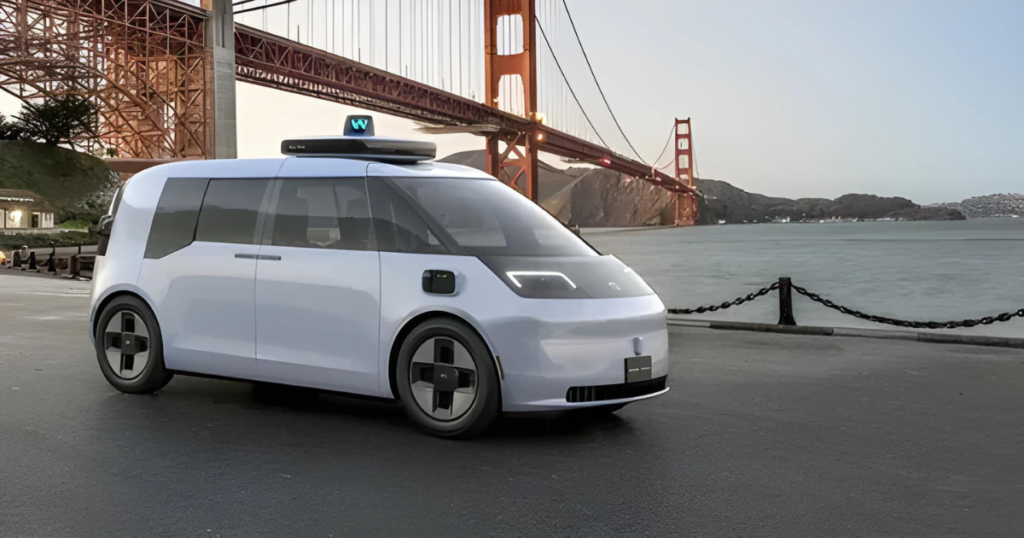
Conclusion
In summary, Waymo is today the self-driving industry leader after pioneering autonomous vehicle technology for over a decade. The company’s extensive real-world testing and the recent launch of commercial services like Waymo One and Waymo Via represent tremendous progress toward driverless transportation becoming a reality. While challenges remain, Waymo’s deep experience places it at the forefront of developing and deploying the autonomous mobility of the future. This detailed overview provides vital background on Waymo’s history, technology, services, partnerships, and outlook as it continues to lead the way forward for self-driving vehicles.
-
Q: When was Waymo founded?
A: Waymo began 2009 as the Google Self-Driving Car Project before being spun into its own company under Alphabet in 2016.
-
Q: How does Waymo’s self-driving technology work?
A: Waymo vehicles use sensors like lidar, cameras, and AI software to understand their environment and navigate autonomously. This is known as the Waymo Driver system.
-
Q: What services does Waymo operate?
A: Waymo One is the company’s autonomous ride-hailing service in Phoenix. Waymo Via focuses on self-driving trucks and logistics.
-
Q: Who are Waymo’s significant competitors?
A: Cruise, Argo AI, Aurora and Zoox are other significant companies developing autonomous vehicle technology.
-
Q: What are the remaining challenges for self-driving cars?
A: Difficult weather, complex urban areas, system redundancy and public trust still pose challenges for full autonomous deployment.
-
Q: What is the future outlook for Waymo?
A: Waymo aims to expand its services to more cities, partner across industries, and make autonomous transportation ubiquitous in the coming years.

